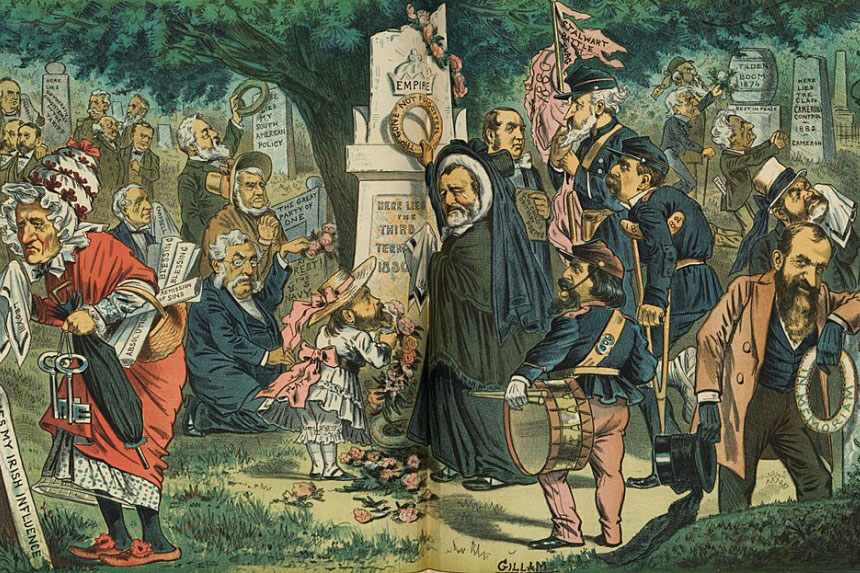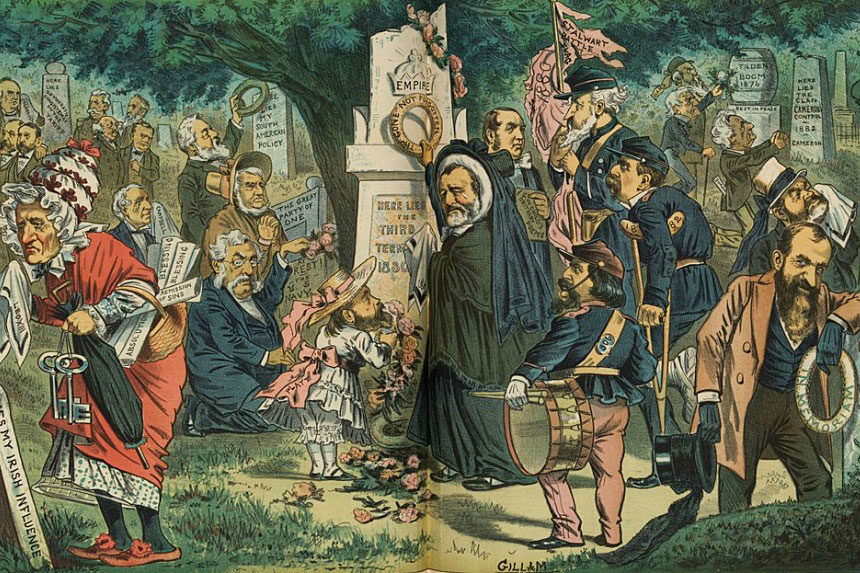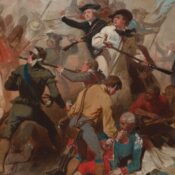This series by American studies professor Ben Railton explores the connections between America’s past and present.
As is the case with too many American holidays, the meaning of Memorial Day has gradually evolved away from its more serious themes and toward more frivolous details: the start of summer (and the summer blockbuster season), a long weekend, barbeques and pool openings, sales. While all our national holidays would benefit from a return to their focal subjects and commemorations, it seems particularly important that we do so with a holiday dedicated to the memory of those American men and women who have sacrificed their lives in our military conflicts and wars across the centuries.
Yet there is an additional layer to Memorial Day’s forgotten histories: the holiday’s origins, in the immediate aftermath of the Civil War, as Decoration Day. And better remembering Decoration Day does not simply help us further contextualize our contemporary Memorial Day celebrations — it illustrates some of the worst and the best of Reconstruction, race, and American history and identity.
Decoration Day’s precise historical origins remain somewhat uncertain and debated, but historian David Blight has convincingly traced them to a specific community and post-war moment: formerly enslaved African Americans in Charleston, South Carolina placing flowers on the graves of Union Army soldiers in May 1865 (less than a month after the Civil War’s conclusion). As Blight has argued, from this striking singular moment, a wider tradition arose over the next few years, with both African Americans and others decorating soldiers’ graves throughout the nation’s many Civil War cemeteries.
One of the clearest representations of this evolving Decoration Day tradition can be found in a short story, Constance Fenimore Woolson’s “Rodman the Keeper” (1880). Woolson’s titular protagonist is a Union veteran working at a Civil War cemetery in an unnamed Southern state, “keeping” the graves of Union and Confederate casualties alike. The story as a whole traces his complex relationship to a dying Southern veteran and the veteran’s bitter daughter, but at its heart is Rodman’s observation of a group of African Americans decorating Union graves. “One morning in May,” Woolson writes, “the [town’s] whole population of black faces went out to the national cemetery with their flowers on the day when, throughout the North, spring blossoms were laid on the graves of the soldiers.”
As the phrase “throughout the North” reflects, by the late 1870s the local and somewhat informal Decoration Day tradition had begun to evolve into a formalized national commemoration, one that Woolson refers to in her text as “Memorial Day.” While that evolution partly built on the kinds of local and African American celebrations that Woolson’s story features, it also too often illustrated a more troubling national trend: the move, with the end of Reconstruction, away from memories of slavery and activism for African American rights and toward the kinds of unifying, white supremacist narratives reflected in the deification of Robert E. Lee.

A May 1877 speech in New York City exemplifies that national shift. For many years the Brooklyn Academy of Music (BAM) had presented a Decoration Day speech, generally featuring Union veterans and former abolitionists. But in 1877, BAM invited instead Roger A. Pryor, a former Confederate general who had moved to the city after the war and become a prominent Democratic politician and opponent of Reconstruction. Pryor’s Decoration Day address offered that perspective on recent American history, calling Reconstruction a “dismal period … devised to balk the ambition of the white race.” Yet he also sought to revise his audience’s understanding of “the cause of secession,” and in so doing to contribute to the national shift away from memories of slavery and race and toward the Confederate sympathies of the developing Lost Cause narrative.

Such shifts likewise changed the meaning of Decoration (and subsequently Memorial) Day, away from African American commemorations of the Civil War and abolition and toward a broader and more conciliatory emphasis on white soldiers and heroism from both sides of the conflict. Yet that narrative was not and is not the only way to remember and celebrate the holiday and its meanings, and in his May 30, 1871 Decoration Day address at Virginia’s Arlington National Cemetery, Frederick Douglass offered a distinct, impassioned, and inspiring rejoinder to such revisionist histories and argument for the holiday’s vital national significance.

In his short speech, entitled “The Unknown Loyal Dead,” Douglass seeks to honor “the solemn rites of this hour and place,” to give voice to the cemetery’s “silent, subtle and all-pervading eloquence, far more touching, impressive, and thrilling than living lips have ever uttered.” He notes that, “We are sometimes asked, in the name of patriotism, to forget the merits of this fearful struggle, and to remember with equal admiration those who struck at the nation’s life and those who struck to save it, those who fought for slavery and those who fought for liberty and justice.” And he offers a potent challenge to that perspective and reminder of the war’s (and thus the holiday’s) central subjects, concluding,
But we are not here to applaud manly courage, save as it has been displayed in a noble cause. We must never forget that victory to the rebellion meant death to the republic. We must never forget that the loyal soldiers who rest beneath this sod flung themselves between the nation and the nation’s destroyers. If today we have a country not boiling in an agony of blood, … if now we have a united country, no longer cursed by the hell-black system of human bondage, if the American name is no longer a by-word and a hissing to a mocking earth, if the star-spangled banner floats only over free American citizens in every quarter of the land, and our country has before it a long and glorious career of justice, liberty, and civilization, we are indebted to the unselfish devotion of the noble army who rest in these honored graves all around us.
Memorial Day represents an opportunity to remember all those American soldiers who have given their lives for their country. Yet there is a particular significance to remembering not just this group of Civil War soldiers, but also and especially the holiday that first commemorated them and the American community that initiated that holiday. If the shift away from Decoration Day too often reflected a frustrating abandonment of that community, we can return to those crucial American histories by better remembering Memorial Day’s origins.
Featured image: A 1883 political cartoon by Bernhard Gillam shows politicians and others in a cemetery on Memorial Day, each seeming to mourn at gravestones bearing the names of their political losses. (Library of Congress)
Become a Saturday Evening Post member and enjoy unlimited access. Subscribe now




Comments
Thanks as ever, Bob! I totally agree, and think it would only amplify those overall reflections to include Decoration Day, and through it both the Union dead and former enslaved folks, in our thoughts as well.
Happy Memorial and Decoration Day,
Ben
Thank you Professor Railton for this feature on Memorial Day and its previous Decoration Day roots. I was not aware of how much of a role the post-Civil War years played in the changes in emphasizing what the holiday would represent in the following years and decades.
It would be nice if it could remain a day of reflection and appreciation for all the men and women who’ve served this nation in our many wars, often losing their lives in the process. It’s bothersome to me personally that it (frankly) has been relegated to one of three mid-year American holiday weekends aka “the one without the fireworks.”